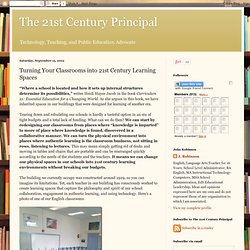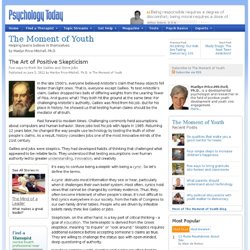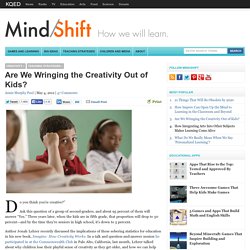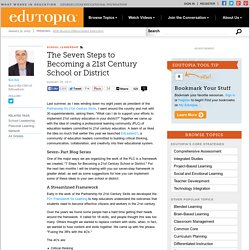

Turning Your Classrooms into 21st Century Learning Spaces. “Where a school is located and how it sets up internal structures determine its possibilities,” writes Heidi Hayes Jacob in the book Curriculum 21: Essential Education for a Changing World.

As she argues in this book, we have inherited spaces in our buildings that were designed for learning of another era. Tearing down and rebuilding our schools is hardly a tasteful option in an era of tight budgets and a total lack of funding. Classroom Jobs for the 21st Century Classroom. I’ve never been good at class jobs.

I always forget to rotate them. But the students love having jobs (most of them anyway) and truthfully it’s helpful to have them take care of the little things. In the 21st century classroom there is potential for new and exciting jobs. Here are a few that I’ve added to my list over the last few years. Technology Team: Although I expect every student in the room to become adept at handling technology responsibly, there are times when I need a few experts to take care of something. Web 2.0 NETS Aligned Tools 2010. 20 Must-See Facts About The 21st Century Classroom. The Current State Of Technology In K-12 7.62K Views 0 Likes What is the next device most students will soon purchase?
15 Habits For Learning In The 21st Century. Defining 21 st century skills is an editorial matter. There are dozens of examples floating range with a range of authority behind them—some inspired, grassroots efforts, other core brands of multimillion dollar organizations making a national push. There is even debate as to whether they are truly necessary, the idea being that learning habits and priorities are timeless, and do not change because the world itself changes. But the scale and rate of change are unrelenting. Culture oozes forward. Trends and movements emerge and overwhelm old habits. Technology does its dizzying dance. And learning has to change with it.
Click here to check out the Edudemic Magazine iPad app. 21st Century Education and Teaching. New Pedagogies For the Digital Age. 15 Habits For Learning In The 21st Century 10.89K Views 0 Likes Defining 21st century skills is an editorial matter, but part of a larger, important conversation. How has learning changed in the 21st century? Here's our take. How To Improve Learner Engagement With eLearning Software 5.05K Views 0 Likes Interaction and learner engagement have long been recognized for their critical role in the learning process.
How A Tornado Inspired Innovation In Joplin, MO Schools 5.84K Views 0 Likes On May 22, 2011, at about dinnertime, an EF5 tornado ripped through Joplin, MO. G_tebay: I work with staff to know... Future Learning Short Documentary. Untitled. Critical Thinking Index Page. Blooms Taxonomy Posters to Use in your Classroom. Personalized Learning: A Short Video. How Do We Help Kids Make Better Choices? Let Them Practice. In her Wall Street Journal editorial, What's Wrong With the Teenage Mind?

, University of California at Berkeley psychology professor Alison Gopnik highlights two key areas of the brain that dictate adolescent and human development: (1) emotion and motivation and (2) control. She cites Berkeley pediatrician and developmental psychologist Ronald Dahl who uses the perfect metaphor to describe adolescence: "Today's adolescents develop an accelerator a long time before they can steer and brake. " It's not unlike the concept of "failing forward" that Peter Sims describes in Little Bets: How Breakthrough Ideas Emerge from Small Discoveries. He writes: "The operating principle for seasoned entrepreneurs who push ideas into the market as quickly as possible [is] to learn from mistakes and failures that will point the way forward. " The Art of Positive Skepticism. In the late 1500’s, everyone believed Aristotle’s claim that heavy objects fell faster than light ones.

That is, everyone except Galileo. To test Aristotle’s claim, Galileo dropped two balls of differing weights from the Leaning Tower of Pisa. And guess what? They both hit the ground at the same time! NETS Implementation - home. Are We Wringing the Creativity Out of Kids? Do you think you’re creative?”

Ask this question of a group of second-graders, and about 95 percent of them will answer “Yes.” Three years later, when the kids are in fifth grade, that proportion will drop to 50 percent—and by the time they’re seniors in high school, it’s down to 5 percent. The Seven Steps to Becoming a 21st Century School or District. Last summer, as I was winding down my eight years as president of the Partnership for 21st Century Skills, I went around the country and met with 30 superintendents, asking them, "What can I do to support your efforts to implement 21st century education in your district?

" Together we came up with the idea of creating a professional learning community (PLC) of education leaders committed to 21st century education. A team of us liked the idea so much that earlier this year we launched EdLeader21, a community of education leaders committed to building critical thinking, communication, collaboration, and creativity into their educational system. Seven-Part Blog Series One of the major ways we are organizing the work of the PLC is a framework we created, "7 Steps for Becoming a 21st Century School or District. " A Streamlined Framework Over the years we found some people had a hard time getting their heads around the framework. The 4C's are: What Are the "7 Steps"? NETS Implementation - Student Friendly Standard Names. While working on a webpage for staff and students, it didn't make sense to call the standards by their "standard category".

For example, second graders would have a hard time reading "Communication and Collaboration". The following could be used as Student friendly equivalents. Videos for PD. Tony Wagner's Seven Survival Skills - University Wiki. Tony Wagner is co-director of the Change Leadership Group at Harvard Graduate School of Education.In his 2008 book, The Global Achievement Gap, Tony Wagner discusses a variety of ways to improve education in the United States.

At the heart of his thinking is the need for all schools to teach what he calls the "Seven Survival Skills", which have much in common with the thoughts of Friedman and Pink (who are both cited in his book). Most of what follows summarizes his ideas but I've thrown in a few of my own. The Seven Survival Skills are: The Four C's: Making 21st Century Education Happen. Don't Fear Failure. (Posted this to my class blog, but thought I'd share it here as well.)

One of the problems I think we have in schools is that we train students to fear failure, to avoid it at all costs. Now, to be clear, I'm not suggesting you go out and fail all your classes. The 21st Century Skills Teachers Should Have. Technology advancements have touched every facet of life including education.

This latter has been radically transformed and teachers who do not use social media and educational technology in their teaching no longer fit in the new system.That’s why every educator and teacher should reconsider certain values and principles . Today I am sharing with you two short videos that will hopefully change what some think about teaching. The following videos are among the top educative videos online . Watch this first one minute 40 seconds video to see the negative side of some teachers. Negative version of when i become a teacher So if you want to fit in the system and develop professionally then this is how to do it . watch this short video to learn more.
3 Practices for 21st Century School Leaders. In an interview with James Bellanca, education scholar Linda Darling-Hammond clearly delineates 3 practices administrators must engage in to bring our schools into the 21st century. (The interview can be found in the book 21st Century Skills: Rethinking How Students Learn.) "School leaders in the next decades need to engage in three practices that we haven't always seen as part of school administration. First is constructing time for teachers to work together on the development of curriculum and assessments.
Second is designing and implementing comprehensive professional development programs. This includes formation of professional learning communities, providing coaching and mentoring for teachers who have been identified as needing additional assistance, and encouraging peer support teams that address the special needs of struggling students.
Kotter’s 8-Steps: Leading Change in the 21st Century Organization. School kills creativity - ken robinson. The 21st century pedagogy teachers should be aware of.